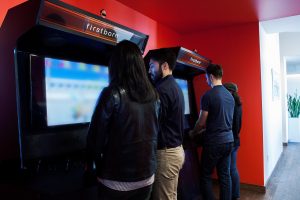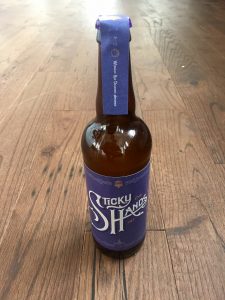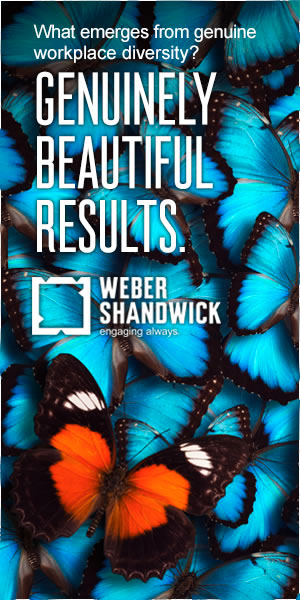From brewing their own beer to building an actual 1980’s-style standing arcade game console to serve as a testing bed for prototyping new games and showcasing agency demos, Firstborn is offering its employee a unique state of digital agency culture.
DIVERGE talked to Dan LaCivita, CEO of Firstborn to find out more:
Company perks are nothing new, especially in this industry. What prompted you to give yours a re-boot? Talk about how innovation, tech and design play a role in enhancing your company culture.
We definitely pride ourselves on our traditions, but it’s also important to proactively express our culture in new ways and inspire collaboration inside and outside the office. We work at the intersection of creativity and technology on a daily basis so it’s natural for our culture to be centered on innovation and design. A lot of the new events and initiatives we’ve started in the last few years stemmed from the personal passions of our employees in these areas. For instance, a group of Firstborners wanted to showcase the artistic pursuits of their colleagues so we now fund an annual pop-up art show at the ONE Club, with this past year’s theme being inspired by the Dada design aesthetic. We also recently hosted an all-agency Hack Day, where we closed down the office to focus on creating digital solutions to alleviate food waste.
So while we haven’t changed our company values, we continue to expand the diversity of our talent and encourage an entrepreneurial spirit eager to take part in shaping the cultural future of our company.
How do you balance putting resources toward passion projects versus client work? Does one help to fuel the other?
It’s a pretty organic process that usually starts with an employee proactively pitching an idea or experimenting with an emerging technology during their free time or time we’ve allocated for R&D. Our virtual reality practice actually started back in 2013 when one of our developers was an early investor in the Oculus Rift Kickstarter. He got his hands on the developer kit and quickly realized its potential. We played around with the hardware—filming our team members skating around Tribeca—and without a brief, sold in a VR experience to our client, Mountain Dew. They have a heritage of being a digital instigator and have access to these awesome action sport assets, so it was a perfect fit. Once they were on board we dedicated a full team to push the limits of the technology. Since then we’ve created passive and interactive experiences for DEW, Patron, Audible, Chevron, and even released a free interactive VR video game, “Nick”.
Vive Train is interesting as it blends an old school game with a new school technology. How did the idea come about?
To keep up with the changing world of VR we’re always bringing in the latest hardware releases. We got the HTC Vive, and we knew we wanted to create a quick and dirty room-scale experience that would take advantage of the interactivity of the handset. Our lead 3D artist and creative developer challenged themselves to a Game Jam, which is basically a three-day creative sprint. They wanted to make an experience that was really intuitive, so anyone could try on the experience and immediately understand the mechanics and possibilities of interactive VR. Almost everyone grew up with some semblance of a train set, so it was the perfect subject, and they liked the parallels of pairing the simplistic and nostalgic wooden trains with future-forward tech.
On the flip side, the arcade consoles puts new school tech onto an old school platform. What went into creating this?
The team built the consoles from scratch—joining together a high-powered processor with a top-of-the-line graphics card into a new PC, hardwiring 10 sets of joystick/buttons, assembling the frame (which started with a 3D model), and finally touching the whole thing up with some paint and trimmings—including classic marquee lighting. They look straight out of the 1980’s and besides providing hours of entertainment, serve as a testing bed for prototyping new games and showcasing our existing VR demos.
Let’s talk beer. This seems to be an ongoing venture. Aside from the obvious, what inspired the idea for your own home-brew? Any plans to take it beyond the Firstborn walls?
We have a bunch of beer-lovers that were bringing in their favorite local releases, and basically started meeting weekly as an informal “tasting club”. This evolved into a desire to take things to the next step and actually start brewing. The first batch was the No. 97 (a reference to our founding year), which was an American pale ale. We released it to the company at our all-agency offsite in September and that was the beginning of the official Firstborn Brewery. The team then brewed the No. 12 winter ale for our holiday party and when we moved to our new office space on the 17th floor, they released the No. 17 Sticky Hands, a dry cider. The team pressed their own apples and unlike the other beers, which were fermented in local brew shops, they fermented the cider in-house. While we did start bottling the beer, at this point we’re keeping consumption confined to Firstborn
Do better perks truly make for happier employees?They don’t hurt, but what really makes our employees happy is the opportunity to work on a wide array of very different types of projects and brands—from beauty and gaming to narrative videos and ecommerce sites. The output of what we make also manifests itself in many different ways, and that makes this an exciting place to work. Summer Fridays, office toys and three-week sabbaticals are always nice, but having the opportunity to constantly be challenged and grow is what makes our employees stay.
Additional thoughts?
I’d be remiss if I didn’t mention our expansive line of Firstborn swag. All new employees receive a care package of Firstborn gear on their first day—hats, sweatshirts, t-shirts—you name it. We also celebrate one-year anniversaries by handing out custom hockey jerseys and then add patches to them to mark milestone anniversaries. Our head of talent recruitment, who actually started here as a motion artist, designs everything—we may have to fund his admission to FIT.





